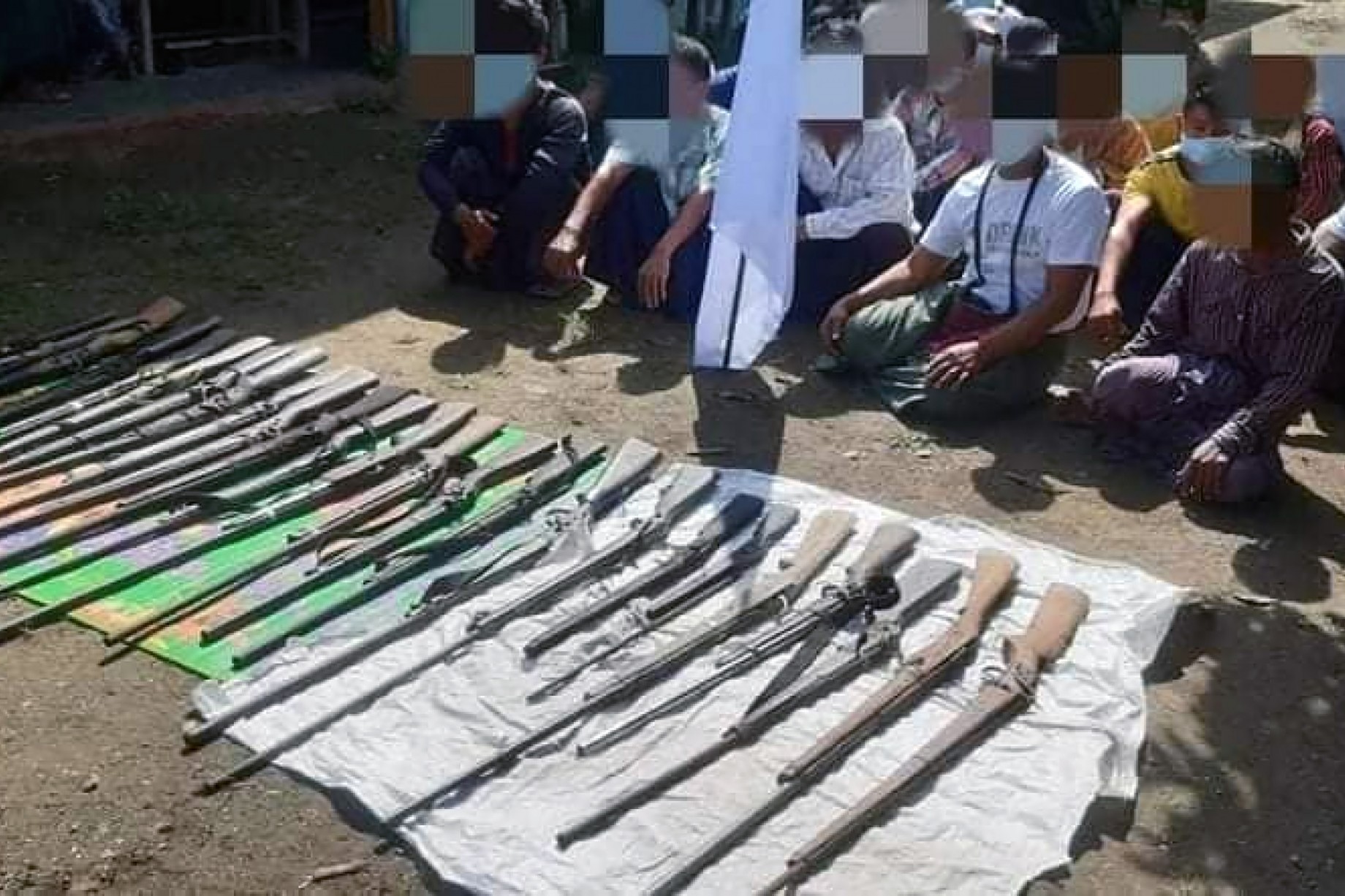
Leaked documents seen by Myanmar Now have confirmed what resistance groups have long claimed—that Myanmar’s military junta has been arming militia groups as part of its effort to crush anti-regime forces.
Minutes from a meeting between coup leader Min Aung Hlaing and the country’s junta-appointed chief ministers, held in Naypyitaw on February 13, show that 77 military-backed militias have been created in Sagaing Region alone.
Myat Kyaw, the chief minister of the restive region, reported that the groups were supporting regime forces facing strong resistance from “terrorists” opposed to last year’s coup.
“Seventy-seven people’s militias have been formed in villages and equipped with 2,080 firearms to support the army and the police force,” he said, according to the meeting’s minutes.
These groups were needed, he added, because more than a year after last February’s coup, the regime has yet to gain full control over the region.
In addition to arming pro-regime villagers, he also suggested that male government staff be given weapons and military training, the minutes show.
The “people’s militias”—or Pyu Saw Htee, as they are commonly known—have been deployed in many parts of Sagaing where armed resistance groups have been most active, including Kalay, Pale, Kanbalu, Taze, and Mingin townships.
Pyu Saw Htee groups have been accused of terrorising residents of villages targeted by the regime and stealing or destroying their property.
Early last month, for instance, a group of around 100 soldiers and Pyu Saw Htee members raided the village of Min Taing Pin in Pale Township, killing four villagers and looting truckloads of valuables during a three-day rampage.
Even after fleeing their homes, villagers continue to be harassed by Pyu Saw Htee mobs. Residents of Kaing Twin, another village in Pale Township where nearly 100 homes were burned down on February 4, say Pyu Saw Htee members later returned to rob them of food and other supplies donated by people living in nearby villages.
On Monday, Pyu Saw Htee members also took part in a series of raids in neighbouring Magway Region, killing nearly a dozen people in three villages in Gangaw Township.
Pyu Saw Htee militias have also been accused of holding villagers hostage. Last Wednesday, the Pale People’s Defence Force (PDF) said it rescued 40 residents of Zee Phyu Kone, a village occupied by junta troops and Pyu Saw Htee members.
According to the leader of the Pale PDF, who calls himself Naga, the captured civilians were pressured to join pro-military militias. Those who refused were shot, he said.
To counter the regime’s efforts to increase the Pyu Saw Htee presence, local resistance forces have recently begun targeting training centres for the militia groups. Last week, a coalition of three PDF groups attacked a police station used for this purpose in Magway’s Pauk Township, killing five, according to resistance sources.
The regime has increased its reliance on militias because of a steady decline in the number of regular troops and informants at its disposal, according to Nay Htun, a member of the Kalay PDF in Taze Township.
“Their troop numbers have fallen and they can’t rely on informants like before. That’s why they have equipped civilians and are making them kill each other,” he said.
The militias are also part of the regime’s psychological warfare effort in northern Myanmar. Late last year, it began using military aircraft to drop propaganda flyers claiming that more than 100 militia groups with some 3,000 members had been equipped with firearms.
The junta has denied that soldiers and the Pyu Saw Htee are responsible for arson attacks and massacres carried out against civilians in conflict areas. In press releases, it has claimed that resistance fighters were the real perpetrators of these crimes.



